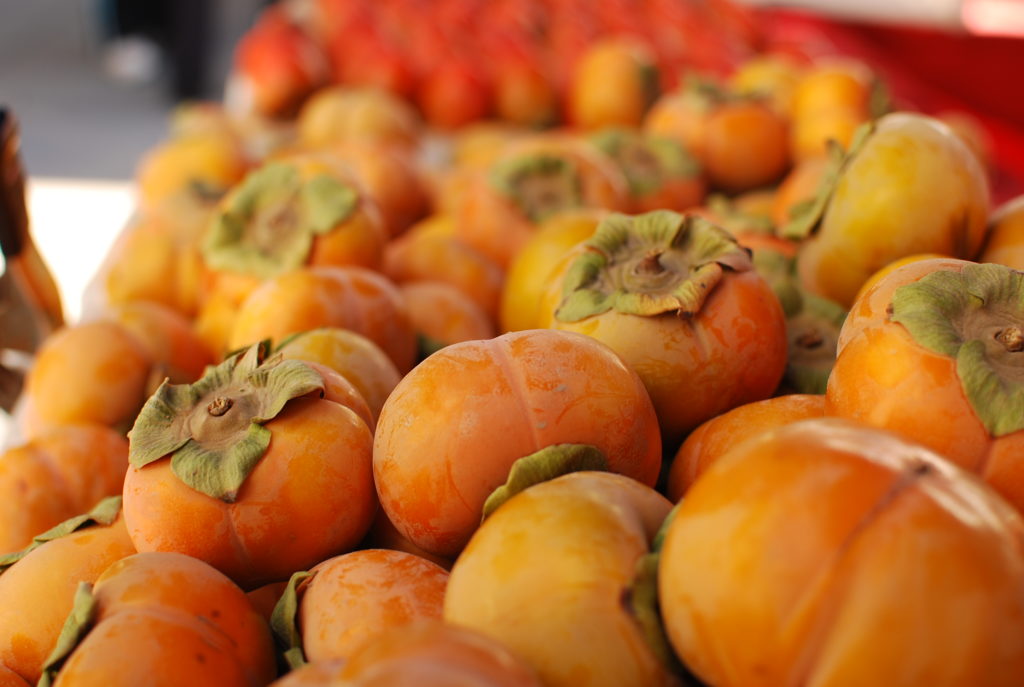Persimmons

Persimmons boldly present themselves to autumn.
There are several species of persimmon, some native to China and others to North America, but the Asian species Diospyros kaki accounts for almost all commercial persimmon production. Both Native Americans and European settlers on this continent ate the fruits of the native Diospyros virginiana, until Japanese immigrants introduced Americans to Asian persimmons (also known as kaki fruits).
There are two distinctly different types of persimmon and many varieties of each type. Astringent varieties, like the acorn-shaped Hachiya, must ripen fully before they are eaten; their unripe flesh is tannic and causes an extremely unpleasant sensation in the mouth. These varieties are generally harvested when they are hard and ripened on countertops or windowsills. When they are ready to eat, their thin skin is a translucent orange and their flesh is runny and gelatinous. Astringent varieties are often used in baking or preserving and can be dried to make the Japanese treat, hoshigaki.
Hamada Farms, which grows four varieties of persimmon, dries about 6000 Hachiyas every year using the traditional Japanese method. First, they hand clip the persimmons from the tree, leaving a “T” where the stem meets the branch. Then, they remove the leaf crown at the top of each fruit, peel the skin off with a potato peeler, and hang them to dry in the sun. The resulting products are dense and succulent treats covered with a white powdery substance that some mistake for mold. The powder is actually a sugar bloom that naturally surfaces, coating the fruit with a delicious sweetness.
Non-astringent varieties of persimmon, like the squat Fuyu, can be eaten when they are still hard. The fruit’s flavor is sweet and mild, and its texture is smooth. These varieties are perfect for eating out of hand, slicing into salads, or drying in thick rounds.
